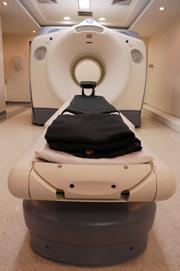
December 20, 2011 — The American Association of Physicists in Medicine (AAPM) acknowledged in a recent statement that the risks associated with medical imaging and any medical procedure must be balanced with its benefits. Alarmist and sensational speculation about the risk of low-dose radiation exposure may cause patients to refuse these life-saving medical tests.
The statement goes on to say:
"(AAPM) acknowledges that medical imaging procedures should be appropriate and conducted at the lowest radiation dose consistent with acquisition of the desired information. Discussion of risks related to radiation dose from medical imaging procedures should be accompanied by acknowledgment of the benefits of the procedures. Risks of medical imaging at effective doses below 50 mSv for single procedures or 100 mSv for multiple procedures over short time periods are too low to be detectable and may be nonexistent. Predictions of hypothetical cancer incidence and deaths in patient populations exposed to such low doses are highly speculative and should be discouraged. These predictions are harmful because they lead to sensationalistic articles in the public media that cause some patients and parents to refuse medical imaging procedures, placing them at substantial risk by not receiving the clinical benefits of the prescribed procedures."
The AAPM also stresses that its members in the medical community strive to ensure patient safety while providing the best possible care. As stated:
"AAPM members continually strive to improve medical imaging by lowering radiation levels and maximizing benefits of imaging procedures involving ionizing radiation."
According to AAPM, medical imaging has revolutionized healthcare and is essential in the detection and treatment of injury and disease. Modern equipment and protocols ensure that patients, physicians, and technicians are exposed to the lowest possible amounts of radiation, while still providing accurate results and diagnostic information.
For more information: www.aapm.org


 December 10, 2025
December 10, 2025 









